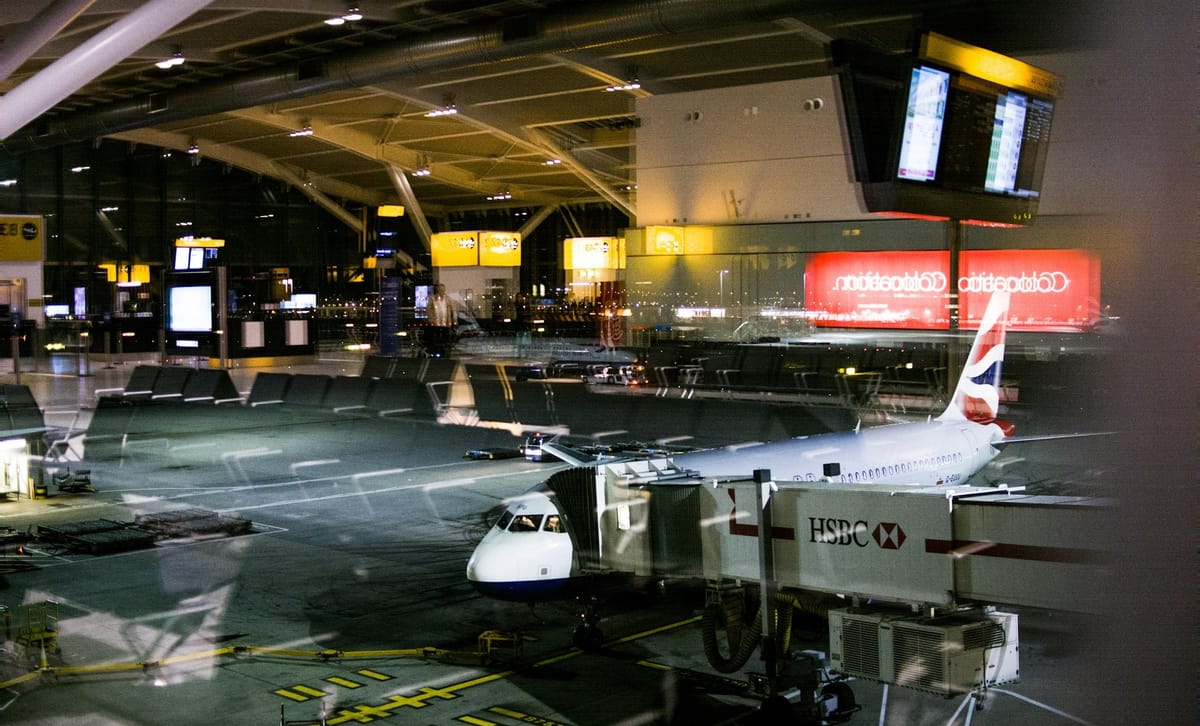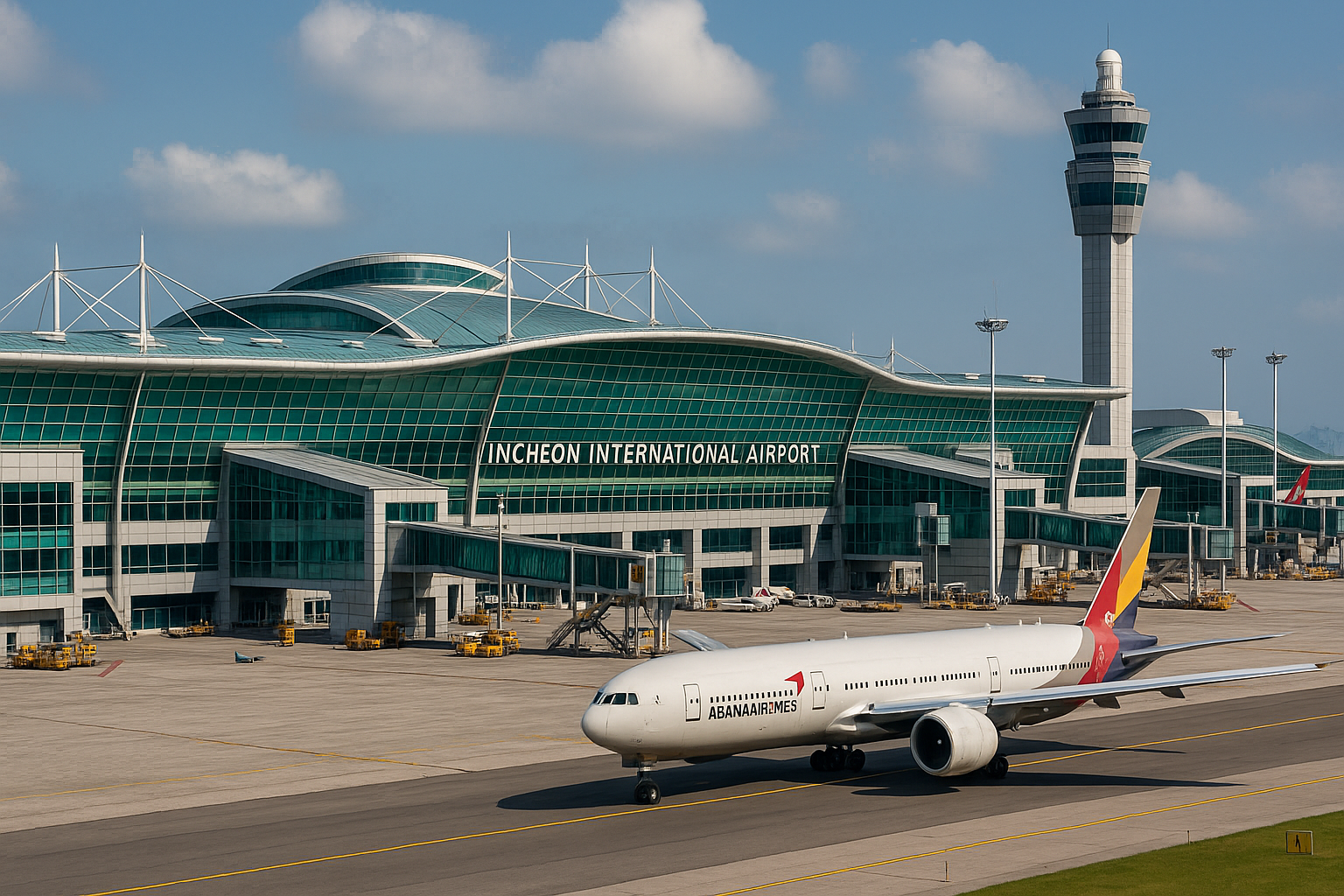Heathrow Airport Introduces AI-Powered Security Screening
Heathrow Airport has taken a giant leap forward by integrating AI-powered technology into its security screening process. This innovative approach aims to streamline the security checks, making them faster and more efficient for travelers.

Heathrow Airport Introduces AI-Powered Security Screening
Key Takeaways:
- AI-powered security screening significantly reduces processing time.
- Enhanced accuracy in threat detection minimizes false alarms.
- Improved passenger experience with shorter wait times.
Introduction to AI-Powered Security Screening
Heathrow Airport has taken a giant leap forward by integrating AI-powered technology into its security screening process. This innovative approach aims to streamline the security checks, making them faster and more efficient for travelers. The introduction of AI is set to revolutionize the way passengers experience airport security, ensuring a smoother and more reliable process.
The AI technology employed at Heathrow is designed to enhance the accuracy of threat detection while reducing the time passengers spend in security lines. By leveraging advanced algorithms and machine learning, the system can quickly and accurately identify potential threats, allowing for a more seamless and stress-free travel experience.
The Need for Faster Processing
One of the primary reasons for adopting AI-powered security screening is the need for faster processing times. Traditional security checks often involve lengthy queues and manual inspections, which can be time-consuming and frustrating for travelers. AI technology addresses this issue by automating many aspects of the screening process, significantly reducing the time required for each passenger.
With AI, the system can analyze and interpret data from various sources, such as X-ray machines and body scanners, in real-time. This allows for quicker identification of potential threats and faster clearance for passengers who pose no risk. As a result, travelers can move through security checkpoints more swiftly, reducing overall wait times and improving the efficiency of the airport's operations.
Enhanced Accuracy in Threat Detection
Accuracy in threat detection is crucial for maintaining the safety and security of passengers and airport staff. AI-powered security screening systems are equipped with advanced algorithms that can detect even the smallest anomalies in luggage and on passengers. This level of precision helps to minimize false alarms and ensures that genuine threats are identified and addressed promptly.
The AI technology used at Heathrow is capable of learning and adapting over time, continuously improving its accuracy and effectiveness. By analyzing vast amounts of data and recognizing patterns, the system becomes more adept at distinguishing between harmless items and potential threats. This not only enhances security but also reduces the likelihood of unnecessary delays caused by false alarms.
Reducing Wait Times for Passengers
Long wait times at security checkpoints are a common source of frustration for travelers. AI-powered security screening aims to alleviate this issue by expediting the screening process and reducing the time passengers spend in line. By automating many aspects of the security checks, the system can process a higher volume of passengers in a shorter amount of time.
The implementation of AI technology at Heathrow has already shown promising results, with significant reductions in wait times reported by early adopters. Passengers can now enjoy a more streamlined and efficient security experience, allowing them to spend less time waiting and more time enjoying their journey.
Improving Passenger Experience
The introduction of AI-powered security screening is not just about enhancing security; it's also about improving the overall passenger experience. By reducing wait times and increasing the efficiency of the screening process, travelers can enjoy a more pleasant and stress-free journey through the airport.
In addition to faster processing times, AI technology also helps to create a more seamless and user-friendly experience for passengers. The system's ability to quickly and accurately identify potential threats means that travelers are less likely to be subjected to unnecessary searches and delays. This contributes to a more positive and enjoyable airport experience for all.
Leveraging Advanced Algorithms
The success of AI-powered security screening at Heathrow is largely due to the advanced algorithms that underpin the technology. These algorithms are designed to analyze and interpret data from various sources, such as X-ray machines and body scanners, with remarkable speed and accuracy. By leveraging these sophisticated algorithms, the system can quickly identify potential threats and expedite the screening process.
The use of advanced algorithms also allows the AI technology to continuously learn and improve over time. As the system processes more data and encounters different scenarios, it becomes more adept at recognizing patterns and distinguishing between harmless items and potential threats. This ongoing improvement ensures that the security screening process remains effective and efficient.
Real-Time Data Analysis
One of the key advantages of AI-powered security screening is its ability to analyze data in real-time. Traditional security checks often rely on manual inspections and delayed analysis, which can be time-consuming and less accurate. AI technology, on the other hand, can process and interpret data from various sources instantaneously, allowing for quicker and more accurate threat detection.
Real-time data analysis enables the AI system to identify potential threats as they arise, rather than relying on delayed or retrospective analysis. This immediate response capability is crucial for maintaining the safety and security of passengers and airport staff, as it allows for prompt action to be taken in the event of a threat.
Continuous Improvement and Adaptation
AI-powered security screening systems are designed to continuously improve and adapt over time. By analyzing vast amounts of data and recognizing patterns, the AI technology becomes more adept at identifying potential threats and distinguishing between harmless items and genuine risks. This ongoing improvement ensures that the security screening process remains effective and efficient.
The ability to learn and adapt is a key advantage of AI technology, as it allows the system to stay ahead of emerging threats and evolving security challenges. By continuously refining its algorithms and improving its accuracy, the AI-powered security screening system at Heathrow can provide a higher level of security and efficiency for travelers.
Case Study: Early Adoption at Heathrow
The early adoption of AI-powered security screening at Heathrow has already yielded impressive results. Passengers who have experienced the new system report significantly reduced wait times and a more streamlined security process. The AI technology has proven to be highly effective in identifying potential threats and minimizing false alarms, contributing to a safer and more efficient airport experience.
One notable example is the implementation of AI-powered security screening in Terminal 5, where wait times have been reduced by up to 50%. This improvement has not only enhanced the passenger experience but also increased the overall efficiency of the terminal's operations. The success of this early adoption has paved the way for the expansion of AI technology to other terminals and airports.
Future Prospects and Expansion
The success of AI-powered security screening at Heathrow has opened the door for further expansion and adoption of this technology in other airports around the world. As more airports recognize the benefits of AI in enhancing security and improving passenger experience, the demand for AI-powered screening systems is expected to grow.
Future prospects for AI-powered security screening include the integration of additional advanced technologies, such as biometric identification and facial recognition. These innovations have the potential to further streamline the security process and enhance the accuracy of threat detection. As AI technology continues to evolve, the possibilities for improving airport security and passenger experience are virtually limitless.
Summary
Heathrow Airport's introduction of AI-powered security screening marks a significant milestone in the evolution of airport security. By leveraging advanced algorithms and real-time data analysis, the AI technology enhances the accuracy of threat detection while reducing wait times for passengers. The early adoption of this innovative system has already shown promising results, with significant improvements in efficiency and passenger experience. As AI technology continues to evolve, the future prospects for AI-powered security screening are bright, with the potential for further expansion and integration of additional advanced technologies.
FAQ
Q1: How does AI-powered security screening improve accuracy?
A1: AI-powered security screening improves accuracy by leveraging advanced algorithms and real-time data analysis to quickly and accurately identify potential threats. The system continuously learns and adapts over time, becoming more adept at distinguishing between harmless items and genuine risks.
Q2: What impact has AI-powered security screening had on wait times at Heathrow?
A2: The implementation of AI-powered security screening at Heathrow has significantly reduced wait times for passengers. Early adopters have reported reductions of up to 50% in wait times, resulting in a more efficient and streamlined security process.
Q3: What are the future prospects for AI-powered security screening?
A3: The future prospects for AI-powered security screening include further expansion and adoption of the technology in other airports around the world. Additionally, the integration of advanced technologies such as biometric identification and facial recognition has the potential to further enhance the accuracy and efficiency of the security screening process.









